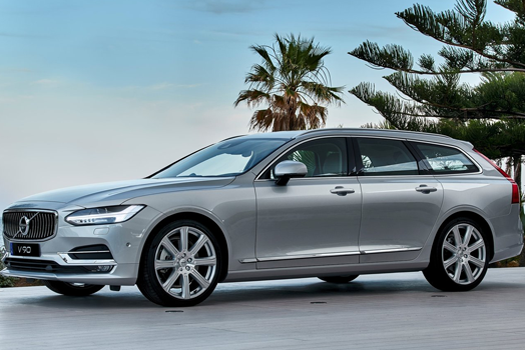

A follow-up to the popular Volvo V70, it is a V90, a premium estate of choice as the V70 remained for many years until the German automakers such as BMW, Mercedes and VW really pushed the standards up. But the V90 will definitely perform to take its position back.
The excellent XC90 SUV, and the S90 saloon models share their platform and parts along with the Engines line-up with the new V90. It reflects Volvo’s altered tactic to premium big cars, with fairly small-capacity four-cylinder, turbocharged petrol and diesel Volvo engines instead of a big V6 to gulp gallons of fuel.
The V90 is aimed squarely at premium estates from the established German brands, so its core opponents are the 5 Series Touring from BMW, A6 Avant by Audi and E-Class Estate. But the standing of a ‘big Volvo wagon’ means that the Swedish offering is also up in contrast to the likes of the Superb Estate, but has no premium experience. The V90 is, in effect, the successor to the V70, and the latest in a long line of smart but gawky wagons that can be outlined in the Volvo 140 that made its debut in the sixties.
It is expected that the V90 might be offered with a plug-in hybrid electric powertrain in the UK, although it has yet to announce the date when it will be introduced. From its very first day the Volvo V90 will be the wildest yet environment-friendly model in the Volvo model range, with 404bhp, and 5.2 seconds to reach 62 miles per hour with just 47g/km of carbon emissions.
Does it make sense? Yes it does, with Volvo only. Excellent cruising refinement, but the chassis feels either too stiff or too soft. Larger wheels dent ride quality, too. Volvo has plans to develop the V90 as a capable long-distance cruiser instead of something you’d want to throw around a Welsh B-road.
The engine line-up based on two turbocharged 2.0-litre four-cylinder Volvo diesel engines. The line-up starts with the D4, with an output of 187bhp and 400Nm of torque, enough to push it from 0-62mph in 8.5 seconds. There will be only front-wheel drive offered on the D4 versions, and it’s the greenest offering in the line-up, with CO2 emissions of 119g/km. This engine is worth to have a test ride on it.
The D5 is the more potent engine in the line-up and it packs 232bhp and 480Nm and features an electric turbocharger module, called PowerPulse, that’s designed to spin up the turbocharger with air and reduce the amount of turbo lag – the delay between pressing the throttle and the engine providing its maximum boost.
There is no front wheel drive only version in the D5, but while it’s noticeably quicker than the D4. On the road, in the car like a Volvo V90, the D5 is extremely punchy and comfortable. You rarely need to rev it much beyond 2,500rpm and it’s seamlessly cheerful to sit at around 1200 of engine revolutions when you’re holding a fast motorway cruise.